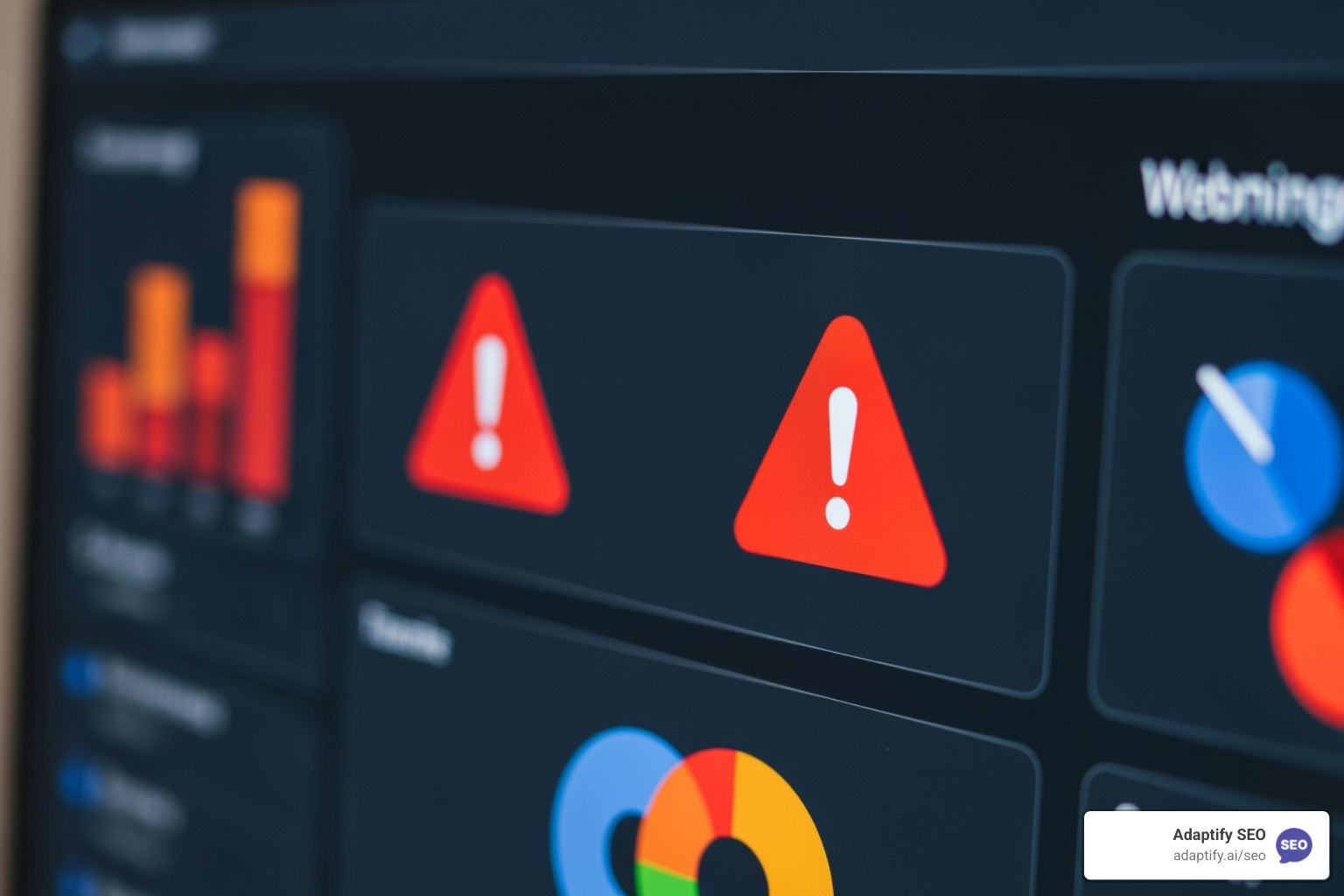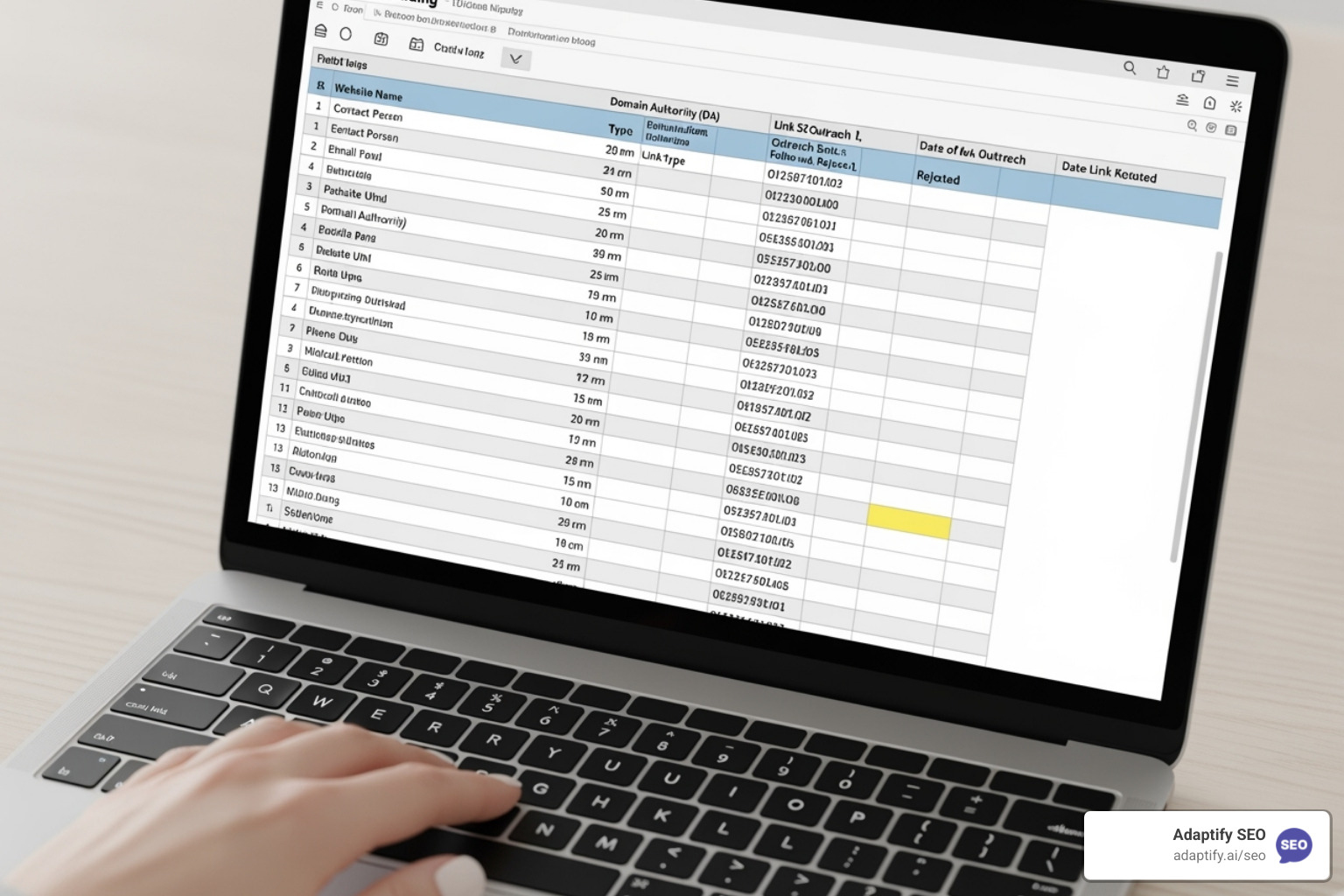The Good, The Bad, and The Ugly of Backlink Exchange Programs
Hansjan Kamerling
Oct 15
Why Backlink Exchange Programs Remain Controversial in Modern SEO

A backlink exchange program is a mutual agreement where websites link to each other to boost search engine rankings. While this can offer SEO benefits, it walks a fine line between legitimate relationship-building and manipulative link schemes that Google penalizes.
Quick Evaluation Framework for Backlink Exchange Programs:
- The Good: Can drive more organic traffic, build industry relationships, and increase referral traffic.
- The Bad: Risk of Google penalties, credibility loss from low-quality partners, and wasted resources.
- The Safe Approach: Focus on relevance, limit reciprocal patterns, use ABC exchanges, and prioritize user value.
The controversy stems from the evolution of backlink exchanges from the "link farm" era. Today's challenge isn't whether to participate, but how to do it safely while avoiding algorithmic tripwires.
Research shows that 73.6% of websites have reciprocal links, suggesting the practice is common despite the risks. However, with only 9.3% of SEO experts considering link exchange as effective as digital PR (48.6%), the industry recognizes its limitations.
I'm Hansjan Kamerling, and at Adaptify AI, I've seen how poorly executed backlink exchanges can devastate organic traffic. My experience has taught me that successful link exchanges require strategic thinking, focusing on mutual value over quick ranking wins.
The Good: Potential SEO Benefits of Link Exchanges
Despite the controversy, a well-executed backlink exchange program can genuinely move the needle for your SEO. The most immediate win is referral traffic, as readers from a relevant site click through to visit your business.
These exchanges often bloom into genuine industry relationships, leading to joint ventures, co-marketing campaigns, and long-term partnerships. The brand awareness boost is another benefit, as every quality link puts your brand in front of a new audience, building credibility over time.
Now, let's talk numbers. Data shows that backlinks on high-quality domains can result in 14% more organic traffic. Beyond that, strategic placements can drive 275% more search impressions and help you rank for nearly 150% more keywords. That's substantial growth that can transform your organic visibility.
If you want to understand what separates a game-changing backlink from a mediocre one, I'd recommend diving into our detailed guide on backlinks.
How Link Exchanges Can Impact Domain Authority
Domain Authority (DA) and Domain Rating (DR) are useful indicators of a site's strength. While not used by Google directly, they reflect authority signals that do matter for rankings.
When a high-authority site links to yours, link equity transfer occurs. Think of it as a vote of confidence that tells search engines your site is trustworthy. My experience confirms that quality beats quantity every time. One link from a relevant, authoritative site will outperform dozens from low-quality directories. This is why some platforms set minimum thresholds, like DA 10 or DR 15.
The correlation with search rankings is clear. Sites that consistently earn links from high-authority domains tend to climb search results faster and maintain their positions during algorithm updates.
Driving Targeted Traffic and Building Relationships
The real magic of a smart backlink exchange program happens when you focus on niche relevance and audience overlap. You attract people who are genuinely interested in what you offer.
When someone clicks through from a relevant site, they arrive with context and intent, leading to better engagement and higher conversion rates. What starts as a simple link exchange can evolve into collaborative partnerships that benefit both businesses long-term, such as joint webinars or co-branded content.
These partnerships naturally improve your credibility and trust. When respected sites link to and collaborate with you, it signals to users and search engines that you're a legitimate player. The key is approaching exchanges with a partnership mindset rather than focusing only on immediate SEO gains.
The Bad: Significant Risks and Google Penalties
While there's an upside to backlink exchange programs, the penalties for getting it wrong can be swift and severe. Google's Link Spam Policy is clear about penalizing "link schemes" designed to manipulate PageRank, specifically calling out "excessive link exchanges." The term "excessive" isn't defined by a number; instead, algorithms scan for unnatural or manipulative patterns.
When these patterns are detected, you risk algorithmic penalties—an automatic demotion in search results that can cause your traffic to plummet. Worse are manual actions, where a human reviewer at Google flags your site, which can lead to complete de-indexing. I've seen the aftermath, and it's not pretty.
The loss of credibility also extends to your audience. When a user clicks a link on your site and lands on spammy content, it damages their trust. The cleanup process is a nightmare of wasted resources spent identifying and removing bad links, all while your traffic and revenue suffer.
Interestingly, a 2020 study showed that 73.6% of websites had reciprocal links, suggesting the practice is common. This tells us that reciprocal linking isn't inherently forbidden—it's all about the approach.

What is Considered a Manipulative Link Scheme?
Understanding Google's definition of a "manipulative link scheme" is crucial for survival. Here are the main red flags:
- Excessive link swapping: If your backlink profile suggests a systematic agreement where everyone links to everyone else, you're in dangerous territory.
- Automated programs: Systems that place links without human oversight for relevance and quality are playing with fire, as Google's algorithms can spot automated patterns.
- Link farms: Websites created solely to host links with thin, irrelevant content are an instant penalty trigger.
- Unnatural anchor text: If every link to your site uses identical, keyword-rich anchor text, it screams manipulation. Natural link profiles have varied anchor text.
- Hiding links: Tactics like matching text color to the background to hide links from users are direct violations of Google's guidelines.
My rule of thumb? If you feel like you're trying to outsmart Google, you probably are. Prioritize genuine user value.
The "How-To": Navigating Backlink Exchanges Safely
So, how do you run a backlink exchange program without harming your SEO? The secret is to think like a helpful human, not a ranking robot.

Every link should pass the "user value" test: would someone find it genuinely useful? This approach keeps you on the right side of Google's guidelines. The magic is in natural integration. Weave links into content where they make sense, rather than just dropping them randomly. Your readers will appreciate it, and so will Google.
Moderation and diversification are your safety nets. Treat link exchanges as just one part of a broader strategy that includes guest posts, digital PR, and creating linkable content. For outreach, ditch templated emails. Build a real relationship first by engaging with a potential partner's content, then reach out with a specific, personalized proposal.
Understanding Different Types of Link Exchanges
Not all exchanges are equal. Understanding the different types can help you avoid penalties.
- Reciprocal links (2-way) are the classic "you link to me, I'll link to you" setup. While common, this is the easiest pattern for Google to detect. It should be done sparingly and only when highly relevant.
- ABC link exchanges (3-way) are a smarter approach. Website A links to B, B links to C, and C links back to A. This breaks the direct reciprocal pattern, making it appear more natural and reducing risk.
- 4-way exchanges add another site to the chain, further obscuring the pattern, but they are often too complex to manage effectively.
When it comes to link insertion vs. guest post swaps, link insertion is faster, as you add a link to existing content. Guest post swaps require creating new content but often deliver better results by adding more value to the partner's audience.
Vetting Partners: Criteria for a Quality Exchange
Choosing the right partner is where most programs succeed or fail. Here are the key criteria:
- Content relevance and quality: Your first filter. If their content is irrelevant or low-quality, walk away. The link must make sense for your audience.
- Domain Authority (DA) and Domain Rating (DR): These metrics offer a quick health check of a site's SEO strength. Look for partners with scores that can pass meaningful link equity.
- Organic traffic analysis: SEO analysis tools can show if a site has real traffic, which suggests Google trusts it.
- Backlink profile health: A messy backlink profile is a red flag. Look for partners with diverse, natural-looking links from reputable sources.
- Avoid direct competitors: Don't exchange links with your biggest rivals; you'd just be helping them outrank you. Focus on complementary businesses.
For more insights on creating content that attracts quality partners, check out our guide on More info about content.
Smart Alternatives to a Direct Backlink Exchange Program
Don't put all your eggs in one basket. Mix exchanges with other link-building tactics.
- Guest blogging: Share your expertise on other sites to build authority and reach new audiences.
- Broken link building: Find broken links on relevant sites and suggest your content as a replacement. It's a win-win.
- Creating linkable assets: Develop useful resources like reports, tools, or guides that other sites will naturally want to link to.
- Digital PR: Earn mentions from high-authority publications through compelling stories or expert commentary. This is highly effective for building top-tier links.
- Resource page link building: Get your site listed on relevant "recommended tools" or "useful resources" pages.
For guidance on crafting compelling outreach, our insights on More info about proposals can help.
Finding and Managing Your Backlink Exchange Program
How do you find quality partners without drowning in spam? And how do you keep everything organized?
For years, manual outreach via email was the primary method. It's time-consuming but can be effective when personalized. Equally challenging is vetting inbound requests, as you need a system to filter out spammy or irrelevant offers. Many SEOs have relied on spreadsheets for tracking partner details, outreach dates, and link placements to keep their backlink exchange program organized.

Modern Platforms vs. Manual Outreach
The landscape has evolved. While manual outreach still works, modern platforms and communities offer new ways to find quality opportunities.
- Online communities: Facebook groups, Slack workspaces, and Reddit communities for SEO or your niche can be goldmines for networking and finding link opportunities.
- LinkedIn: Connecting with content creators or marketing managers in complementary niches can lead to genuine partnerships.
- Private communities: Exclusive clubs can improve quality control. For example, KarmaLinks.io is a community for B2B SaaS companies that uses a points system to ensure fair exchanges and facilitates safer ABC exchanges.
- Creator communities: Platforms like the "Backlink Creators" community on Discord provide a space for members to find compatible partners in a collaborative environment.
- Automated platforms: Some services offer a "set and forget" approach, matching you with partners based on your criteria. While tempting, I always recommend maintaining human oversight to ensure quality and relevance, as overly automated, irrelevant links can still trigger penalties.
The sweet spot is often combining automation for efficiency with human judgment for quality.
Measuring the Success of Your Backlink Exchange Program
Without proper measurement, you're flying blind. Here's how to track if your backlink exchange program is working.
- Track referral traffic: Use Google Analytics to see if people are clicking through from partner sites. Engaged users from these links are a sign of a valuable partnership.
- Monitor keyword rankings: Use SEO tools to track target keyword positions before and after securing new links. Ranking improvements are a clear indicator of success.
- Monitor your backlink profile: Backlink monitoring tools can show increases in referring domains and improvements in your DA/DR scores. They also help you spot potentially harmful links that may need to be disavowed.
- Calculate ROI: Connect your link-building efforts to increases in leads, sales, or conversions. A holistic view of traffic growth, ranking improvements, and business outcomes will determine if your efforts are paying off.
Frequently Asked Questions about Backlink Exchanges
After years of helping businesses with link building, I've noticed the same questions keep coming up. Let me tackle the big ones.
Is backlink exchange allowed by Google?
Yes, but with caution. Google's guidelines prohibit "link schemes" designed to manipulate rankings, which includes "excessive link exchanges." However, Google also recognizes that natural, editorial links between relevant sites are fundamental to the web.
The key is avoiding excessive, low-value exchanges that look manufactured. If you're building genuine relationships and the links provide real value to users, you're likely fine. Focus on relevance over quantity and ensure exchanges are just one part of a diverse link-building strategy.
What is an ABC link exchange and is it safer?
An ABC link exchange (or 3-way exchange) is a more sophisticated approach. Instead of a direct A-to-B and B-to-A swap, the pattern is: Website A links to Website B, Website B links to Website C, and Website C links back to Website A.
Yes, it is generally safer. This model breaks the direct reciprocal pattern that is easy for search engines to detect as manipulative. It appears more natural and reduces the risk of penalties.
However, this isn't a magic loophole. The same quality standards apply. An ABC exchange between three irrelevant, low-quality sites is still a bad idea. You need partners with good content, authority, and relevant audiences. Platforms like KarmaLinks focus on managing these triangular exchanges while maintaining strict quality requirements.
How can I find trustworthy partners for a backlink exchange?
Finding good partners is like dating—you want quality connections. A bad link partner can hurt your SEO.
- Start with genuine networking. Join industry-specific groups on Facebook or Slack to meet people who understand your business. These organic connections often lead to the most valuable partnerships.
- Use vetted platforms. Communities like KarmaLinks.io for B2B SaaS or Discord groups like Backlink Creators provide curated environments where members are pre-screened, reducing your risk.
- Do your homework. Before reaching out, check their content quality, Domain Authority/Rating, and organic traffic levels using SEO tools. Ensure they are a site you'd be proud to associate with.
- Make your outreach personal. Skip generic templates. Mention specific content you enjoyed and explain why a partnership would benefit both of your audiences. You're building a relationship, not just collecting a link.
Conclusion: A Cautious but Viable Strategy
So, what's the final verdict? A backlink exchange program remains a cautious but viable strategy. The days of spammy link farms are over; today's successful exchanges are about quality and relevance.
The math is compelling when done right: more organic traffic from high-quality placements, stronger industry relationships, and genuine referral traffic that converts. But these benefits require you to be smart, selective, and strategic.
The risks haven't disappeared. Google's algorithms are sharp at detecting manipulative patterns, and a single bad partnership can undo months of work. Never prioritize quantity over quality or ignore relevance for a quick win.
The future of link building is about blending quality, relevance, and smart automation. It's not about gaming the system but building genuine connections that serve real users. The most successful programs create value first, with SEO benefits following naturally.
At Adaptify AI, we've built our approach around this philosophy. Our automated SEO services help agencies identify quality opportunities while maintaining the human oversight that ensures ethical practices. We handle the heavy lifting of strategy and PR link building without losing sight of what matters most: creating links that help users and stand the test of time.
The future belongs to those who can blend efficiency with ethics. If you're ready to build a backlink strategy that's both effective and penalty-proof, we can help.
Explore our SEO services and find how Adaptify AI can be your partner in building links that actually last.
